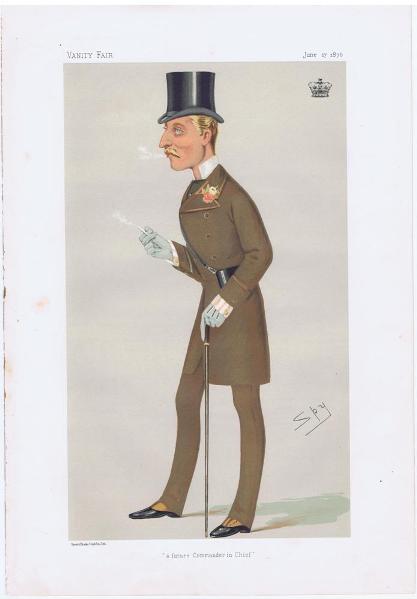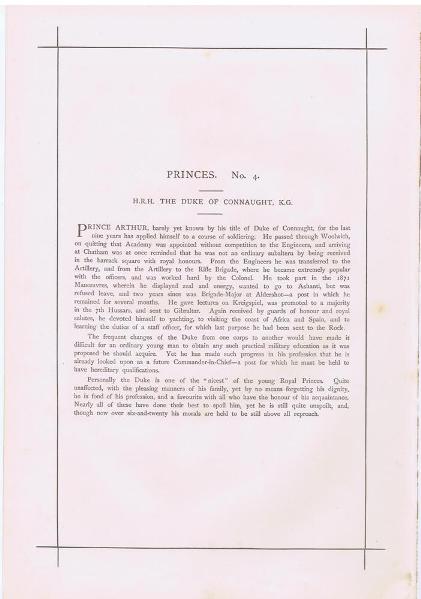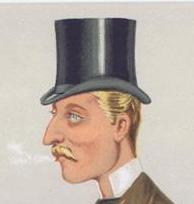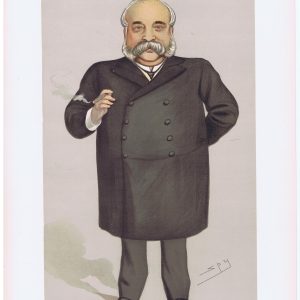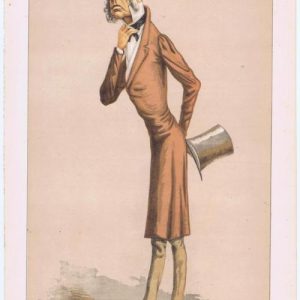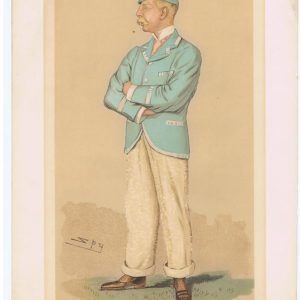Description
Prince Arthur The Duke Of Connaught Vanity Fair Print 1876
Original Lithograph of H.R.H. The Duke Of Connaught with the caption at the bottom of the print: A Future Commander in Chief
It was at an early age that Arthur developed an interest in the army, and in 1866 he followed through on his military ambitions by enrolling at the Royal Military College at Woolwich, from where he graduated two years later and was commissioned as a lieutenant in the Corps of Royal Engineers on 18 June 1868. The Prince transferred to the Royal Regiment of Artillery on 2 November 1868 and, on 2 August 1869, to the Rifle Brigade, his father’s own regiment, after which he conducted a long and distinguished career as an army officer, including service in South Africa, Canada in 1869, Ireland, Egypt in 1882, and in India from 1886 to 1890. In Canada, Arthur, as an officer with the Montreal detachment of the Rifle Brigade, undertook a year’s training and engaged in defending the Dominion from the Fenian Raids; there was initially concern that his personal involvement in Canada’s defence might put the Prince in danger from Fenians and their supporters in the United States, but it was decided his military duty was primary. Following his arrival at Halifax, Arthur toured the country for eight weeks and made a visit in January 1870 to Washington, D.C., where he met with President Ulysses S. Grant. During his service in Canada he was also entertained by Canadian society; among other activities, he attended an investiture ceremony in Montreal, was a guest at balls and garden parties, and attended the opening of parliament in Ottawa (becoming the first member of the Royal Family to do so), all of which was documented in photographs that were sent back for the Queen to view. It was not, however, all social and state functions for Arthur; the Prince was on 25 May 1870 engaged in fending off Fenian invaders during the Battle of Eccles Hill, for which he received the Fenian Medal.
Arthur made an impression on many in Canada. He was given on 1 October 1869 the title Chief of the Six Nations by the Iroquois of the Grand River Reserve in Ontario and the name Kavakoudge (meaning the sun flying from east to west under the guidance of the Great Spirit), enabling him to sit in the tribe’s councils and vote on matters of tribe governance. As he became the 51st chief on the council, his appointment broke the centuries-old tradition that there should only be 50 chiefs of the Six Nations. Of the Prince, Lady Lisgar, wife of then Governor General of Canada the Lord Lisgar, noted in a letter to Victoria that Canadians seemed hopeful Prince Arthur would one day return as governor general. Arthur was promoted to the honorary rank of colonel on 14 June 1871, substantive lieutenant-colonel in 1876, colonel on 29 May 1880 and, on 1 April 13 years later, was made a general. He gained military experience as Commander-in-Chief of the Bombay Army from December 1886 to March 1890. He went on to be General Officer Commanding Southern District, at Portsmouth, from September 1890 to 1893. The Prince had hoped to succeed his first cousin once-removed, the elderly Prince George, Duke of Cambridge, as Commander-in-chief of the British Army, upon the latter’s forced retirement in 1895. But this desire was denied to Arthur, and instead he was given, between 1893 and 1898, command of the Aldershot District Command.
In August 1899 the 6th Battalion, Rifles of the Canadian Non-Permanent Active Militia, located in Vancouver, British Columbia, asked Prince Arthur to give his name to the regiment and act as its honorary colonel. The regiment had recently been converted to the infantry role from the 2nd Battalion, 5th British Columbia Regiment of Canadian Artillery. With the Prince’s agreement the unit was renamed 6th Regiment, Duke of Connaught’s Own Rifles (DCORs) on 1 May 1900. He was subsequently appointed colonel-in-chief of the regiment, then known as The British Columbia Regiment (Duke of Connaught’s Own), in 1923. He held that appointment until his death. On 26 June 1902 he was promoted to the post of field marshal, and thereafter served in various important positions, including Commander-in-Chief of Ireland, from January 1900[18] to 1904, with the dual position of commander of the Third Army Corps from October 1901, and Inspector-General of the Forces, between 1904 and 1907.
Published: 17-Jun-1876 Signed by: SPY, Leslie Ward . Dimensions approximately 26cm x 38cm.
Free postage to mainland UK. Overseas buyers please contact us to agree shipping.
Note that these lithograph prints are all in excess of 100 years old. There may be minor imperfections commensurate with age. Please do not hesitate to ask questions about shipping or condition.

